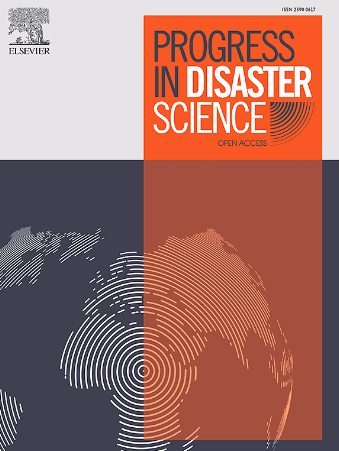灾害预警信息:基于巴西经验的挑战与机遇
IF 3.8
Q3 ENVIRONMENTAL SCIENCES
引用次数: 0
摘要
本研究调查了巴西灾害通信短信的有效性,重点研究了2018年至2023年发送的短信的结构和内容。使用警告响应模型进行编码。分析显示,在被分析的73701条消息中,只有1.83%是完整的;也就是说,它们包含了所有有效的要素(来源、危害、位置、引导和时间)。调查结果还显示,有关自然灾害的信息得分最高,其中圣卡塔琳娜州和帕拉纳州尤为突出。相比之下,米纳斯吉拉斯州和Goiás等州在有关技术风险的信息方面得分较低。此外,缺乏具体的地理和时间,没有包括潜在影响的细节,损害了信息的有效性。该研究强调,160个字符的信息长度限制是有效沟通的一个障碍,这可能会损害人们对风险的感知,并采取保护措施。该研究的结论是,优化灾害通信信息对于改善巴西的灾害响应至关重要,同时它建议使用多渠道系统、持续培训民防人员以及加强社区参与以加强抗灾能力。本文章由计算机程序翻译,如有差异,请以英文原文为准。
Disaster warning messages: challenges and opportunities based on Brazil's experience
This research investigates the effectiveness of disaster communication messages in Brazil, with a focus on the structure and content of SMS messages sent out from 2018 to 2023. The Warning Response Model was used for coding. The analysis reveals that only 1.83 % of the 73,701 messages analyzed were complete; that is, they contain all the elements to be effective (source, hazard, location, guidance and time). The results also show that messages about natural hazards achieved the highest scores and that the states of Santa Catarina and Paraná stand out. In contrast, states such as Minas Gerais and Goiás achieved low scores regarding messages about technological risks. In addition, lacking geographical and time specifics, and failing to include details on the potential impacts compromise the effectiveness of the messages. The study highlights that the message length limit of 160 characters is an obstacle to effective communication, which can compromise the population's perception of risk, its adoption of protective actions. The research concludes that optimizing disaster communication messages is crucial to improve disaster response in Brazil, while it recommends using a multichannel system, the continuous training of civil defense agents, and greater community engagement to strengthen resilience.
求助全文
通过发布文献求助,成功后即可免费获取论文全文。
去求助
来源期刊

Progress in Disaster Science
Social Sciences-Safety Research
CiteScore
14.60
自引率
3.20%
发文量
51
审稿时长
12 weeks
期刊介绍:
Progress in Disaster Science is a Gold Open Access journal focusing on integrating research and policy in disaster research, and publishes original research papers and invited viewpoint articles on disaster risk reduction; response; emergency management and recovery.
A key part of the Journal's Publication output will see key experts invited to assess and comment on the current trends in disaster research, as well as highlight key papers.
 求助内容:
求助内容: 应助结果提醒方式:
应助结果提醒方式:


